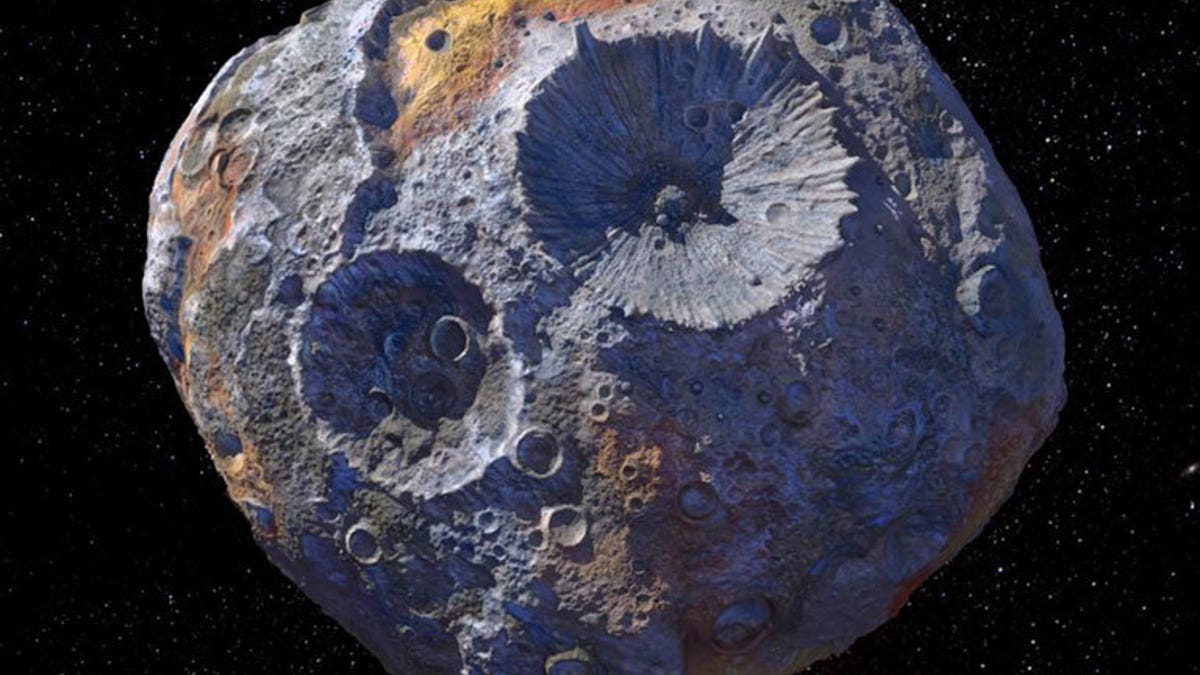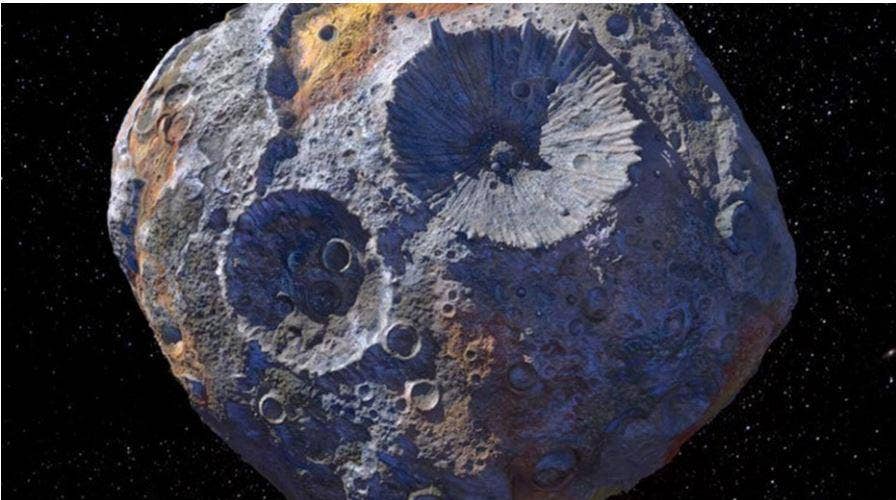Giant asteroid could turn into gold rush for space mining companies
NASA is eyeing up a nearby asteroid that contains enough gold to make everyone on Earth a billionaire.
An asteroid that was discovered nearly 170 years ago could be worth as much as $10,000 quadrillion, experts believe.
The space rock, known as “16 Psyche,” was discovered on March 17, 1852, by Italian astronomer Annibale de Gasparis, but a newly published study notes it could be almost entirely comprised of iron and nickel. The study's lead author, Dr. Tracy Becker, estimates its worth approaching $10,000 quadrillion.
“We’ve seen meteorites that are mostly metal, but Psyche could be unique in that it might be an asteroid that is totally made of iron and nickel,” Becker said in a statement. “Earth has a metal core, a mantle and crust. It’s possible that as a Psyche protoplanet was forming, it was struck by another object in our solar system and lost its mantle and crust.”

Artist's concept of the asteroid 16 Psyche, which is thought to be a stripped planetary core. (Credit: Maxar/ASU/P. Rubin/NASA/JPL-Caltech)
According to data from the World Economic Forum, the GDP for the entire planet was $114.4 trillion in 2018.
It's believed that 16 Psyche, which is approximately 230 million miles from Earth in the asteroid belt between Mars and Jupiter, is a protoplanet, or the leftover core of a planet that started to form and failed.
Becker said she was able to observe the massive space rock at two distinct points in its rotation, noting that it was reflective at ultraviolet wavelengths.
“We were able to identify for the first time on any asteroid what we think are iron oxide ultraviolet absorption bands,” the researcher explained. “This is an indication that oxidation is happening on the asteroid, which could be a result of the solar wind hitting the surface.”
16 Psyche has a 140-mile diameter, making it one of the largest non-planet objects in the asteroid belt and one that could answer many unsolved questions about the formation of the Solar System.
NASA HEADED TOWARDS GIANT GOLDEN ASTEROID THAT COULD MAKE EVERYONE ON EARTH A BILLIONAIRE
“What makes Psyche and the other asteroids so interesting is that they’re considered to be the building blocks of the solar system,” she added. “To understand what really makes up a planet and to potentially see the inside of a planet is fascinating. Once we get to Psyche, we’re really going to understand if that’s the case, even if it doesn’t turn out as we expect. Any time there’s a surprise, it’s always exciting.”
NASA intends to launch a mission to visit 16 Pysche in August 2022, arriving in early 2026, according to the agency's website.
The 21-month long mission would map and study the properties of the asteroid, with the main goal being to "determine whether Psyche is indeed the core of a planet-size object."





















